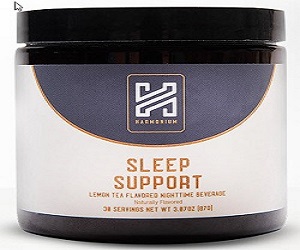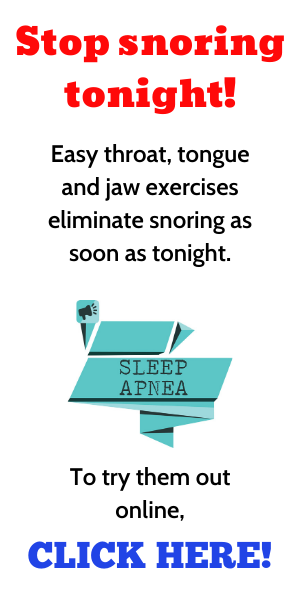Airing CPAP is the wireless, mini version of the traditional CPAP mask. They are more commonly referred to as “micro CPAP” in stores and they are said to be just as convenient as the traditional one.
So, how much will airing CPAP cost? Airing CPAP’s average price starts from $3.00 if not covered by insurance but the prices may be different depending on your location and selected brand.
Some places may not sell CPAP yet as it is still under development and it is not completely approved by FDA yet. Though, users that have tried the device claim to experience the same relief a traditional CPAP provides.
Keep in mind, Airing CPAP and the mini CPAP can be two different things. An airing CPAP is more of a nasal strip than a mini CPAP mask that is worn on the face which covers the nose or mouth, or it can be both.
The airing CPAP is actually 2 inches long and 1.5 inches wide by 1 inch tall. Currently, the designed product is capable of providing a 20 centimeters water pressure.
According to the developers, active humidifiers are not necessary to make the product work.
Airing CPAP stays in place since it uses soft, silicone nose buds that prevent it from falling off during sleep. An internal sensor regulates the air pressure so it doesn’t need active or direct humidification.
Right now, airing CPAP is not capable of adjusting to the user’s required air pressure unlike the newer and advanced CPAP machines today. You will get the pressure that is prescribed to you.
The airing CPAP works better in improving nasal air obstruction which eliminates mouth breathing.
Currently, the manufacturers continue to improvise the airing CPAP and test it until it’s ready for the official launch.
Airing CPAP will be a great medical device for treating sleep apnea and since it is small and wireless, it will be more comfortable to use. But when should you buy airing CPAP? Learn more about it as you read on.
When should you buy airing CPAP
Before you consider buying airing CPAP, consider some of its pros and cons first. Once again, the tiny device is still under development and does not guarantee the same security as the traditional CPAP treatment.
| PROS | CONS |
| Good for traveling | Not durable |
| More comfort during sleep | Safety is not fully secured yet |
| Cost less that the CPAP machine | Disposable, one time use only |
PROS of Airing CPAP
- Good for traveling
- Since it is small and light, it can be carried anywhere and used anytime the patient wants to sleep. Also provides fast relief like the regular CPAP masks.
- More comfort during sleep
- Unlike the traditional mask for CPAP which is connected to the machine, airing CPAP is not connected to any machine and is small in size. It is also soft which makes it comfortable.
- Not being attached to a machine makes it possible for users to move around freely during sleep. No more back sleepers or side sleepers CPAP masks!
- Cost less than the CPAP machine
- Mini CPAP costs approximately $250 to $600 but can also be up to $900 while the traditional ones costing $500, $850 up to $3000, airing CPAP is only $3.00 each.
CONS of Airing CPAP
- Not durable
- Since the airing CPAP is built so small, it doesn’t have durable materials in it and can be easily broken, unlike the traditional CPAP masks.
- Safety is not fully secured yet
- Being in development, there are still safety risks for the device. It can possibly contain hazardous content or explosive parts that we may not know of.
- Disposable, one time use only
- The biggest drawback of airing CPAP is that it costs $3.00 or lower for each piece and it is only for one-time use. Instead of settling for daily airing CPAP, you can just buy the CPAP mask.
But still, those cons will probably be eliminated later on as it continues to be developed.
How airing CPAP works
Once airing CPAP makes it to the official market, there are a lot of good things it can do for our health.
- Lessen daytime sleepiness
- Sleep apnea can make it difficult to fall asleep at night. If you use airing CPAP, you may prevent this.
- Avoid morning headaches
- Sleep apnea also causes headaches. Airing CPAP users report better mornings without headaches after using airing CPAP.
- Avoid heart failures
- May lead to fatal conditions such as brain damages or even death
- Avoid heart attacks
- Can also be severely threatening
- Stop irregular heartbeats
- Worsens the ability to breathe
- Can trigger anxiety
- Prevent stroke
- Can leave permanent damage
- May lead to paralysis
- Avoid depression
- Not an easy condition to treat
- Avoiding the risk of diabetes
- Leaves you prone to more heart attacks
- Avoiding high blood pressure
- Aside from your physical health, this can also affect your mental health and relationship with people around you including your work. Airing CPAP treatment can prevent this.
- Avoid worsening ADHD
- Sleep apnea reduces your ability to focus which is what happens when you have ADHD (Attention Deficit Hyperactivity Disorder)
- Having a lack of control to focus can lead to frustration
- Wake up with full energy
- As mentioned, your energy will be reduced since you are unable to sleep well.
- Avoiding the risk of seizures
- Sleep apnea patients are more prone to seizures during sleep compared to epilepsy patients without sleep apnea.
What can you use aside from airing CPAP
Considering that the airing CPAP is disposable and not fully verified for market trade yet, you should look for alternate options. CPAP has different designs and models as well.
If not, check out this list of alternatives. This also includes basic lifestyle changes, not only tools that can help your sleep apnea.
- Nasal Strips
- Nasal strips are one of the earliest tools used to treat sleep apnea and its symptoms such as snoring. Nowadays, there are newly developed nasal strips that you can try.
- Oral Appliance
- Oral pieces can help with sleep apnea, they are custom made to make sure it prevents the obstruction in the airways and counter sleep apnea.
- It is actually an alternate solution if you don’t want CPAP masks or can’t have airing CPAP.
- Lose weight
- Being overweight or obesity can be a cause of sleep apnea. You can potentially get rid of sleep apnea by getting plenty of exercises and maintaining a healthy, balanced diet.
- Stop or avoid smoking too much.
- Excessive smoking can cause or worsen sleep apnea. Reducing your smoke intake per day will also reduce the risk of getting sleep apnea. If possible, quit smoking to potentially get rid of sleep apnea.
- Avoid excessive alcohol consumption
- Drinking too much alcohol before sleeping can cause and worsen sleep apnea just like smoking.
- Avoid sedatives before going to sleep
- Certain sedatives can cause sleep apnea. Consult a medical expert to determine what type of sedative may be the cause.
- Maintain a proper sleep routine.
- Sometimes, we end up getting exposed to sleep apnea since we simply don’t sleep at the right time. Try to avoid staying up late and sleep early.
- Try to keep a proper sleeping position as well. Try to sleep with your head elevated or sleeping in a recliner chair.
- Don’t overwork yourself all the time.
- Going to sleep exhausted can make us a lot more prone to sleep apnea. It’s important to relax a little bit at first before going to bed to lessen the risk of sleep apnea.
- Treat chronic allergies
- Some allergies can trigger obstruction in your body’s airways and may cause you to have sleep apnea. Treat or avoid triggering your allergies to prevent sleep apnea.
- Traditional CPAP machine
- If you’re left with no choice, just settle for the traditional CPAP machine or mask. It has different models available that can be suitable to your liking.
How do you permanently get rid of sleep apnea without airing CPAP? Well don’t worry, it is possible to cure sleep apnea today using surgeries.
- Rapid Maxillary Expansion
- For children with obstructive sleep apnea. This process places an expandable brace on the roof of the mouth that increases the width of the upper jaw (maxilla).
- Over time, parents can adjust the brace using a special key to increase the amount of pressure for the teeth.
- Jaw Advancement Surgery
- For teenagers and adults. This process will surgically break the jaw bones, moved forward and then fixed properly with screws and plates and will change the person’s facial structure or profile.
- It might take months to recover.
- Surgical Airway Advancement
- Similar to the 2nd example. Bones of the upper and lower jaw will be repositioned in a way that will relieve airway obstruction.
Related Questions
- How often should I replace my CPAP machine?
CPAP machines can last up to 7 or 8 years if maintained properly, but if not, the average times you should replace your CPAP machine is once every 3 to 7 years.
- Can you lose weight by using a CPAP machine?
Indirectly, yes. Sleep apnea disrupts the patient’s body and causes it to produce more hormones that makes you want to eat more and gain weight uncontrollably.
With the help of CPAP machine treatment, the body’s system will be regulated once again and help the users lose weight or maintain their weight.




